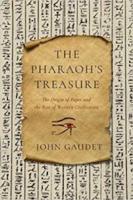
Amberley (2019) h/b 384pp £16.99 (ISBN 9781681778532)
Before anything further is said, a short caveat may be in order: it ought to be clarified that this book may well be read as a paean to paper and paper-like writing materials. The author’s enthusiasm for his subject is undoubted, as are the length and riches of paper’s histories. History written with obvious enthusiasm may easily raise questions about its partiality, but in this case the suspicion should be qualified. One does not have to agree with every word and idea in the book, but the joy that went into compiling and writing this piece of cultural history is evident, and inspiring in its own right.
A few words about its structure. It has three parts. The first part, ‘Guardian of Immortality’, gives an insight into the role of papyrus records as unintentional traces of the past and as intentional messages from the past, read and re-read by generations of users and by very diverse audiences. Some notes from the history of Egyptology are included, mostly in a tone sympathetic to the researchers’ efforts, using a narrative of heroic research. The second part, ‘Egypt, Papermaker to the World’, traces the papyrus paper production, the peculiar materiality of the medium, and its circulation in the ancient world. Like its successor, pulp paper, papyrus was made in different quality and size for diverse purposes, and has survived in elegant rolls as well as in cartonnage, including recycled papyrus.
The second part of the book advances the narrative of the papyrus medium and its use across the ancient Mediterranean, developing the aspects of papyrus history from part one, as the papyrus served for accounts, as well as for the books destined for afterlife, for humdrum notes as well as for messages from history for posterity.
Finally part three elaborates the role of papyrus paper as the ‘enemy of oblivion’. As in part one, the trajectory of cultural memory is followed at length: the legacy of ancient scribes traced from the written objects, the scrolls, to the reinterpreting of written artefacts by Sir Lawrence Alma-Tadema and, indeed, the Hollywood film-makers. The modern interest in papermaking and writing history has had many forms, including advertisements for beef extract using images of ancient papyrus workshops and scribes. The scribe is a sort of an eminence grise of Egyptomania.
G. echoes the Egyptian text on p. Chester Beatty IV—an eloquent encomium of writers and the written word, which culminates in statements such as ‘Scrolls are more useful than tombstones’, and ‘For sure what is needed in the cemetery is the name in the mouths of men’. The key element for Egyptian literati was the literacy itself, which provided an ability to make lasting cultural contributions. The very existence of texts was important, because it gave the possibility of being remembered, whilst all other carriers of memory might be lost. Seen from this perspective, the Egyptian literati, scribes or not, have succeeded, as their legacy has survived, though re-read, re-interpreted, misunderstood and misrepresented with much vigour.
G.’s book pursues the legacy of ancient writers, but also its material form, from scrolls to books, and to libraries. Scrolls and books are represented as the ultimate carriers of memory—and of power. Armchair travel across the ancient world in used as a narrative device, especially in parts two and three of the book, which also follow the travels of papyrus paper as G. enlarges on the mobility of text on paper. Ultimately, he is presenting not only texts as records of history, but acknowledging their role in the making of history, including in the history of religion. Writing down a canon, as well as uncovering or suppressing a non-canonical text, are powerful acts of strengthening, or unseating, a religious or cultural tradition. Although this is a popular book, key elements of both ancient and modern written culture are captured rather well.
Given the genre of Gaudet’s volume, it will not be useful to dwell on the degree of simplification and some errors in the text—these are often part and parcel of broad-themed popular history books. The volume would have been just as interesting even without references to the ‘Da Vinci Code’. The quality of plates and figures is somewhat limited.
But to sum up, this is a highly readable, enthusiastic, fast-paced book, with an element of error but also a wealth of information.
Hana Navratilova
